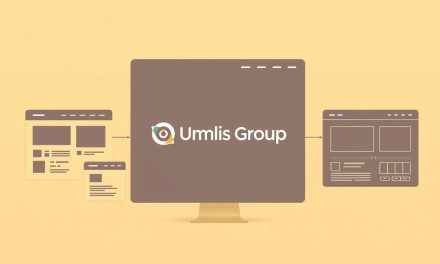We help independent professionals measure value clearly so you can choose opportunities that protect capital and grow equity.
A few years ago, a consultant I know bought a small property for $500,000 and sold it for $1,000,000 after two years. The simple math gave a 100% result, but it missed the time aspect and hidden costs.
This guide explains the basic formula—gain divided by cost—and why professionals use ROI as a quick screen for business and real estate choices.
We show how to calculate ROI properly, capture every relevant cost, and convert a static figure into an annualized ROI so you can compare different horizons.
By the end of this section, you will have clear definitions, practical examples, and the right questions to ask before you commit funds.
Table of Contents
Key Takeaways
- ROI (ROI) is a simple ratio linking profit to cost; use it to screen opportunities quickly.
- Apply a clear formula and include all costs to avoid misleading figures.
- Convert to annualized ROI when time matters for fair comparison.
- Use ROI alongside risk and cash-flow metrics for sound business choices.
- Examples cover small acquisitions, campaigns, and real estate to make concepts practical.
Understanding return on investment: definition, purpose, and when to use it
ROI distills a project’s benefit into a single percentage, making choices clearer for managers and freelancers alike.
What it measures: ROI expresses benefit relative to cost, usually as net income divided by the capital base. Be explicit: state whether the numerator is net income or gross gain, and whether the denominator is total cost, equity, or deployed capital.
Why it matters: ROI is a common language across business functions because it compresses results into one recognisable metric. Use ROI to quickly rank options and filter priorities before you build deeper models.
« Clarity in definition keeps performance credible at review. »
How it varies: asset class, sales cycles, margin structure, and holding period change expected outcomes. An 8% yield is strong for conservative assets but may be weak for high-growth projects. Two projects with the same percentage can differ once time is added.
- Define numerator: net income, profit after fees, or realized gain.
- Define denominator: cost, deployed capital, or purchase base.
- Adjust for time: annualise when comparing different horizons.
When to use it: apply ROI for a fast pulse check and for comparing investments across departments. Escalate to IRR or cash-flow models when timing, risk, or attribution matters to you or different people on the team.
ROI formulas explained: from basic ratio to DuPont breakdown
Quantifying gains with precise formulas helps you see whether profit margins or asset use drive outcomes.
Two simple equations get you started: Net Income ÷ Cost of Investment and Investment Gain ÷ Investment Base. Use the first when you want net profit clarity, and the second when gross gain better reflects the commercial event.
The DuPont framework decomposes that percent into Return on Sales × Capital Turnover. Donaldson Brown at DuPont created this approach to trace whether margin or asset efficiency moves the needle.
Practical notes and mapping
- Map P&L lines to profit and sales; map the balance sheet to invested capital and equity.
- Include hidden costs: maintenance, taxes, transaction and legal fees to avoid skewed calculation.
- Compare related ratios like return assets and return equity to see effects of leverage and structure.
« Define what you mean by ‘gain’ and by ‘base’ before you publish any result. »
Use basic roi for quick triage, DuPont for diagnosis, and internal rate where timing matters. We provide an example and a template in the next section so you can apply the formula calculation with consistent definitions across the business.
How to calculate ROI step by step
Start by listing every cash movement tied to the project. Capture the purchase price, transaction fees, ongoing costs like maintenance and property taxes, and expected exit proceeds. This first step ensures your calculation reflects real value.
Gather inputs: initial capital, cash flows, fees, and net income
Translate bank statements and invoices into a simple schedule of cash flows. Record upfront price, stamp duties, legal fees, operating costs, and any sales commissions. Take account of taxes and one-off charges that often get missed.
Summarise net income clearly: gross receipts minus documented expenses. Keep source files and annotate assumptions so numbers stay auditable and reusable.
Compute ROI for single cases and for fair comparison
For a single case use Net Income ÷ Cost or (Ending − Beginning) ÷ Beginning. Apply the same period and assumptions when you run the same calculation across two options.
- List inflows and outflows chronologically.
- Compute the percentage with a consistent denominator and document your choice.
- Add sensitivity toggles (±10% revenue or costs) to test how the figure shifts.
« A consistent, auditable schedule beats a quick estimate every time. »
We include a short example in the next section to show the calculation line by line and where small fees alter the final percentage materially.
Annualized ROI: making time-comparable decisions
To compare projects fairly, convert final gains into a steady yearly rate that reflects compounding. Annualized ROI normalizes outcomes across different horizons so you can prioritize options that grow capital faster and fit your roadmap.
Annualized ROI formula and Excel-friendly approach
The formula is simple: Annualized ROI = (Ending Value / Beginning Value)^(1 / years) – 1. Calculate years as (ending date − starting date) / 365 for precision.
In Excel use: =POWER(Ending/Beginning,1/Days/365)-1 or =(Ending/Beginning)^(1/(Days/365))-1. This keeps the roi formula calculation auditable and clear in models.
Why a higher percentage over fewer years matters
A nominal 21.6% result from buying at $12.50 and selling at $15.20 becomes about 35.5% when annualized for a shorter holding period. That gap shows why a 25% gain in one year beats the same gain spread over five years.
- When to use internal rate: choose internal rate for uneven cash flows; use annualized roi for single-period outcomes.
- Five years benchmark: state multi-year horizons clearly when discussing partners or lenders.
- Checklist: match dates, avoid mixing monthly and annual rates, and account for partial years.
| Metric | Example | Formula | Note |
|---|---|---|---|
| Simple ROI | 21.6% | (15.20−12.50)/12.50 | Nominal gain over the full period |
| Annualized ROI | 35.5% | (15.20/12.50)^(1/years)−1 | Normalises for time and compounding |
| Excel formula | N/A | =POWER(15.2/12.5,1/(Days/365))-1 | Use precise day count for accuracy |
| Use case | Portfolio choice | Compare annually | Pairs with risk notes for balanced decisions |
« Express outcomes per year to make fair, comparable decisions across projects. »
Real-world ROI examples: property, marketing, and business cases
Practical examples make abstract percentages meaningful; here we apply figures to property, campaign, and business scenarios.
Property example: capital gain and calculation over time
Simple case: buy for $500,000, sell for $1,000,000 after two years. That equals a 100% roi by the gain ÷ base method.
Now add fees: 5% agents, 1.5% taxes, and €10,000 holding costs. Including these lowers the net percentage and changes the annualised figure.
Lesson: always compute both simple and annualised figures before you commit capital.
Marketing example: campaign spend, sales, and profit attribution
Campaign: €2,000 media spend that creates €17,000 in profit attributed to the campaign. Mapped through a DuPont lens, this implies about 8.5% roi when you account for sales conversion and capital turnover adjustments.
Include creative, tools, discounts, and fulfilment costs. Exclude internal overheads already counted elsewhere to avoid double counting.
« Include every fee and tag assumptions; a checked example survives partner review. »
- Compare marketing projects to other investments using the same roi framework.
- Run simple what-if scenarios: -20% sales or +10% costs to see sensitivity.
- Watch common pitfalls: missing taxes, over-attribution, and delayed effects spilling into later periods.
Practical note: keep source files, label assumptions clearly, and use consistent methods when you calculate roi across projects. For further guidance on diversifying income and comparing streams, see income stream diversification.
Key factors that move ROI: risk, time, asset type, and opportunity cost

Deciding between projects requires more than a high percentage; context shapes which option truly wins.
We map the main factors that shift roi so you can take account of context before you rank choices.
First, risk and volatility change realised outcomes. Two investments with identical roi may diverge if one is stable and the other swings widely.
Second, time matters. Compare the same horizon for both options. Annualised figures reveal which path grows capital faster.
Third, asset type affects liquidity and scalability. Real estate needs holding effort; digital services scale faster and free up your hours for other work.
A note on inflation: use a real rate return to preserve purchasing power, not just nominal percentages.
« Anchor expectations to historical ranges for the asset class and adjust for today’s rates. »
- Score each chance for risk, liquidity, and runway to complement roi with qualitative notes.
- Include opportunity cost—what else you could do with the same capital or labour.
- Always evaluate at least two investments side by side with the same assumptions and period.
Practical tip: pair a numeric roi with a short risk score and a note about alternative uses of funds. That simple frame protects business value and aligns choices with your tolerance.
Leverage and ROI: modeling cash-only versus financed scenarios
Leverage changes the scale of what you can control with a given amount of personal capital.
How borrowed capital amplifies gains and losses
With cash-only, profit divides by your full capital. With financing, that same profit divides by your smaller equity stake, producing a larger percentage for your cash at risk.
Example: a $200,000 real estate sale that nets $20,000 yields 10% with all cash ($20,000 / $200,000). With 80% financing your equity is $40,000, so the figure becomes 50%.
Accounting for interest, fees, and market sensitivity
Interest, origination fees, and covenants reduce net cash flow and lower the headline figure. Model interest expense and closing costs explicitly.
Adjust scenarios for longer holding, higher expenses, or modest price declines to see where leverage flips from helpful to hazardous.
Stress-testing worst cases before using leverage
- Compare cash-only and financed cases step by step to see equity at risk.
- Build a sensitivity grid: price −10%, costs +15%, hold +12 months to find break-even points.
- Check lender metrics: debt service coverage and covenant triggers shape feasibility.
« Cap leverage, keep reserves, and set exit criteria before you borrow. »
Practical guardrails: limit leverage, maintain a cash buffer, and run an internal rate return analysis for multi-period deals. ROI alone may mislead when cash flows are uneven.
ROI in business valuation: multiples, SDE vs. EBITDA, and owner salary effects
A multiple gives a quick market snapshot: invert it and you get an implied percentage that guides offers.
Converting ROI to a multiple: the math is simple. A 4.0 multiple implies 25% implied yield (1 ÷ 4 = 0.25). Use this to check whether a quoted business price matches your target ROI and capital limits.
Why EBITDA often beats SDE for fairness
EBITDA removes owner-specific pay and gives a cleaner base for valuation. Small firms trade around 2–4× SDE; mid-sized firms often sit at 3–6× EBITDA.
When you deduct a market salary for the owner, EBITDA reduces the risk of overpaying for what is effectively a job, not scalable profit.
Opportunity cost of your labor and five years of multiple expansion
Your salary assumption can cut the headline yield sharply. A €100k SDE that becomes €70k EBITDA after a market manager salary changes the implied percentage materially.
Over five years, modest multiple expansion plus EBITDA growth compounds value. Model conservative scenarios for capital appreciation and cash flows to avoid optimism bias.
Practical checklists and comparative data
| Metric | Range | Implied yield | Note |
|---|---|---|---|
| SDE multiple | 2.0–4.0× | 25%–50% | Typical for small, owner-led firms |
| EBITDA multiple | 3.0–6.0× | 16.7%–33.3% | Cleaner for buyers and lenders |
| Five-year expansion | +0.5–1.5× | Varies | Depends on growth and market sentiment |
| Equity vs assets | N/A | N/A | Cross-check with return equity and return assets after acquisition |
« Anchor offers to EBITDA, sanity-check the multiple-implied yield, and model exit values conservatively. »
Alternatives to ROI: IRR, ROE, and ROA for deeper insight
For deals with staged payments or complex cash flows, a single ratio rarely tells the whole story. We outline practical alternatives and when each metric matters for your business choices.
Internal rate return for timing and cash-flow accuracy
IRR captures all cash flows and expresses them as an annualised growth rate. Use internal rate return for staged deals, private equity, or projects with milestone payments.
Why it helps: it values timing. When cash is uneven, IRR ranks options more fairly than a simple roi percentage.
Profit to equity and profit to assets as operational lenses
ROE (profit to equity ratio) shows how well leadership turns equity into profit. ROA (profit to assets ratio) measures asset efficiency, independent of finance structure.
- Use roi for quick screening of two investments.
- Use IRR where time matters and cash flows vary.
- Use ROE/ROA to benchmark business performance after acquisition.
« Stack metrics to avoid a single-number blind spot. »
Practical note: IRR needs detailed cash-flow inputs and a robust formula. Document assumptions so partners trust the analysis, especially for real estate and private equity deals.
Using ROI in different contexts: marketing, real estate, private equity, and SMBs
A fast, consistent screen helps you rank marketing, property, and business deals before deeper due diligence.
ROI is a universal pulse check. In marketing, a short campaign can show very quick payback through sales and profit. For real estate, gains emerge more slowly and hinge on rent, capex, and financing. Private equity deals depend on operational uplift and governance. Small and mid-size businesses can deliver very wide outcomes—from modest to exceptional—because of operational risk and low liquidity.
Comparing investments across risk, liquidity, and time horizons
Use the same metric but add context-specific lenses: cash flow patterns, sales efficiency, and leverage capacity. A quick benchmark:
- Bonds: 1–4% with high liquidity and low leverage.
- Stocks: about 6–10% with variable liquidity and market risk.
- Real estate: roughly 4–12%, medium liquidity, often high leverage.
- Businesses: highly variable (1–100%), low liquidity, medium leverage and high risk.
How to compare two investments: align time periods, annualise figures, and add a simple risk score. Model worst-case cash flow sensitivity and check if sales and profit margins support the headline percent.
« Pair a numeric roi with a short risk note and a plan for periodic review. »
We recommend documenting assumptions and reviewing results quarterly. That cadence helps you reallocate capital proactively and protect value as markets and operations change.
Tools and templates: calculators, Excel models, and scenario planning
Begin with clear inputs and the right conventions so your model yields decision-grade figures. A focused calculator helps you calculate roi and test how fees, leverage, and dates shift outcomes.
Inputs and assumptions
Capture these essentials: initial outlay, operating cash flows, exit assumption, fees, and taxes. Label each field and add a notes box so assumptions stay auditable.
Building the Excel model
Structure tabs for Inputs, Cash Flows, Calculations, and Dashboard. Use named ranges, data validation, and version control so collaborators trust the file.
Formula blocks and functions
Provide clear formula calculation cells for simple ROI, capital gain, total gain, and annualized roi. Add an IRR example using Excel’s IRR/XIRR for time-weighted cash flows.
Scenario planning and checks
- Include leverage toggles, holding-period sliders, and fee rows to run sensitivity tests.
- Save base, upside, and downside cases to speed meetings and focus on deltas.
- Add error checks: sign conventions, units, and a dashboard summarising key metrics.
« A repeatable, documented model beats a quick estimate every time. »
We supply downloadable templates that mirror this layout and an example dataset so you can validate calculation steps before you use the file in partner or lender discussions.
Common ROI pitfalls and how to avoid them

A high headline percent can hide timing, fees, and finance that erode real value. Treat ROI as a first filter, not a final verdict.
Ignoring time, leverage, hidden costs, and inflation
ROI ignores time unless you annualize or use IRR. Compare periods before you decide.
Financing changes outcomes: debt service, fees, and rising rates shrink net gains. Model interest explicitly.
Hidden costs—taxes, commissions, repairs—often cut a projected gain by a surprising margin. Document every cash flow.
Inflation makes nominal wins worth less in real terms. Adjust targets to preserve purchasing power.
Overlooking qualitative factors like freedom and strategic fit
Chasing a higher roi may harm liquidity or flexibility. Assess volatility, time demands, and strategic fit for your business.
We recommend small sensitivity checks and a short rubric: numeric ROI, risk score, and fit check. Use that triad to guide go/no-go decisions.
| Common Error | Impact | Quick Fix | When to escalate |
|---|---|---|---|
| Ignoring period | Misleading percent | Annualize or run IRR | Different horizons |
| Underestimating financing | Lower net cash | Model interest & fees | Use of leverage |
| Missing costs | Overstated gains | List all cash flow items | Acquisitions or sales |
| Ignoring fit | Poor operational outcome | Score strategic fit | Long-term business moves |
« Document assumptions, source inputs, and test downside scenarios before you commit. »
Conclusion
Finish by applying the tools here to one real case and learn from the result.
Use a clear definition of roi and a disciplined schedule for costs, fees, and dates. This keeps analysis auditable and useful across any business or real estate chance.
Compare two options side by side. Annualize results and check internal rate return when timing matters. Model cash-versus-financed scenarios so leverage and equity effects are visible.
Keep templates, record assumptions, and set a review cadence. If you need a quick next step: pick one opportunity, run the calculator, and document the outcome. You will build better decisions and protect value as markets change.
FAQ
What does ROI measure and why is it widely used?
ROI measures the profit generated relative to the capital deployed. It gives a simple percentage that helps compare projects, campaigns, or assets regardless of scale. Professionals use it as a common language to evaluate efficiency, prioritize opportunities, and communicate performance to stakeholders.
How does ROI differ by business, asset class, or holding period?
The calculation stays similar, but interpretation changes. For short-term marketing campaigns you focus on cash inflows and attribution. For real estate you include capital gains and holding costs. For a business purchase you adjust for owner salary, depreciation, and exit multiples. Time horizon, liquidity needs, and tax treatment affect comparability.
What is the basic ROI formula I should use?
The common formula is (Net Profit ÷ Capital Invested) × 100. Net profit can be sale proceeds minus costs, or net income after fees. Always define which cash flows you include so comparisons remain meaningful.
How does the DuPont breakdown help interpret ROI?
DuPont separates ROI into profitability (margin) and efficiency (capital turnover). That shows whether performance comes from higher margins, faster asset use, or both. It guides where to focus improvement: pricing, cost control, or asset deployment.
Which items should I clarify as “return” and “cost” in practice?
Spell out whether return means gross revenue, net operating income, or sale proceeds after tax. Define cost as cash invested, adjusted book value, or purchase price plus transaction fees. Consistent definitions prevent misleading comparisons.
What inputs do I need to calculate ROI step by step?
Collect initial capital, all cash inflows and outflows during the holding period, fees, taxes, and final sale proceeds. Convert noncash items (depreciation) to their cash impact. Use those figures in the chosen formula, and document assumptions.
How do I compare two different investments using ROI?
Use the same definition and time basis for both. If durations differ, annualize each result or use IRR to account for timing. Adjust for leverage and risk so you compare like with like—otherwise a higher percentage may hide greater volatility.
How do I annualize ROI for time-comparable decisions?
Convert total ROI to an annualized rate using (1 + total ROI)^(1/years) − 1. This lets you compare multi-year projects to annual returns and to other opportunities with different horizons in Excel or financial calculators.
Why might a higher return over fewer years be preferable?
Shorter payback reduces exposure to market shifts, inflation, and execution risk. Faster capital recycling lets you redeploy funds into new opportunities, improving compounding and strategic flexibility.
Can you give a simple property example of calculating ROI?
For a buy-and-hold property, total ROI often equals (Sale Price − Purchase Price − Costs + Net Rental Income) ÷ Cash Invested. Annualize that figure to compare with stocks or bonds, and include taxes, maintenance, and vacancy to get realistic results.
How is ROI used for marketing campaigns?
Marketing ROI links campaign spend to attributable profit: (Attributed Revenue − Campaign Cost) ÷ Campaign Cost. Accurate attribution, lifetime customer value, and incremental sales measurement are essential to avoid overestimating performance.
How does leverage affect ROI and risk?
Borrowed capital can amplify gains and losses. With leverage, equity ROI rises when asset returns exceed borrowing costs, but it also increases downside volatility. Always model interest, fees, covenants, and stress scenarios before using leverage.
What costs should I include when modeling financed versus cash scenarios?
Include interest expense, origination fees, required reserves, and changes in cash flow timing. Compare net cash-on-cash returns for equity holders and test sensitivity to rate changes and occupancy or revenue drops.
How do I convert an ROI into a valuation multiple and back?
A simple conversion uses reciprocal logic: a steady ROI of x% roughly corresponds to a 1/(x) valuation multiple, adjusted for growth and risk. For businesses, include expected growth, margins, and discount rates to refine that translation.
Why might EBITDA be preferred over SDE for ROI comparisons?
EBITDA removes non-operating items and owner-specific adjustments, making it more standardized for comparing businesses. SDE includes owner benefits; it’s useful for small-owner operated firms but less comparable across buyers.
How should I account for the opportunity cost of my time when calculating ROI?
Assign a market-based salary for owner-operator time and deduct it from net income when measuring investor returns. That yields a truer picture of whether the investment compensates both capital and labor.
When is IRR more appropriate than simple ROI?
Use IRR when cash flows occur at multiple times or when timing matters. IRR accounts for the schedule and magnitude of inflows and outflows, giving a time-sensitive annualized return that complements ROI.
How do ROE and ROA differ from ROI for business performance?
ROE measures returns to shareholders (net income ÷ equity). ROA measures efficiency of asset use (net income ÷ assets). Use those alongside ROI to understand capital structure and operational efficiency.
How can I compare investments across risk, liquidity, and time horizons?
Adjust expected returns for risk premiums, convert multi-year gains to annualized figures, and factor in liquidity discounts. Scenario analysis and sensitivity tests help reveal trade-offs beyond raw percentages.
What inputs and assumptions belong in an ROI calculator or Excel model?
Include initial cash, periodic cash flows, tax rates, fees, holding period, sale proceeds, and financing terms. Make assumptions explicit and build scenario toggles for growth, vacancy, or conversion rates.
What common pitfalls should I avoid when using ROI?
Avoid ignoring time value of money, hidden fees, taxes, inflation, and noncash accounting items. Don’t compare figures with inconsistent definitions or neglect qualitative factors like strategic fit and flexibility.
How do qualitative factors like freedom or strategic fit affect ROI decisions?
Some opportunities deliver nonfinancial value—control, optionality, or market positioning—that justify lower numeric returns. Include such factors in decision matrices so ROI reflects total value, not just dollars.
Are there standard templates or tools I can use to speed ROI analysis?
Yes. Use established Excel templates, financial calculators, and SaaS tools tailored to marketing, real estate, and business acquisitions. Ensure templates let you change assumptions and run sensitivity tests.
How should I stress-test ROI under worst-case scenarios?
Build downside cases with lower revenue, higher costs, rising rates, and longer vacancy or sales timelines. Evaluate break-even points, covenant risks, and how much buffer you need before returns turn negative.
Over a five-year horizon, how do capital appreciation and multiple expansion influence ROI?
Appreciation increases exit proceeds; multiple expansion raises valuation relative to earnings. Both can materially boost multi-year ROI but depend on market cycles, operational improvement, and buyer sentiment—factors you should model explicitly.





